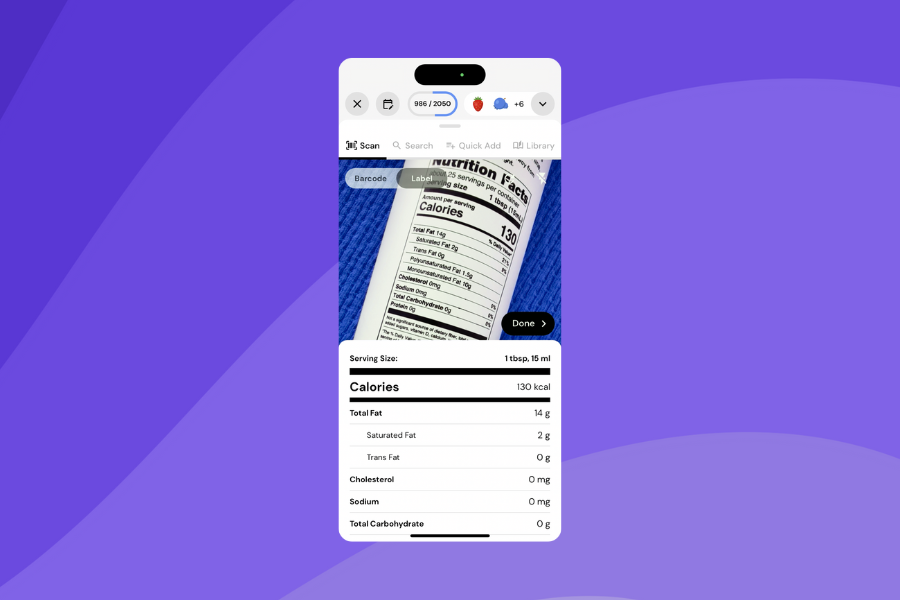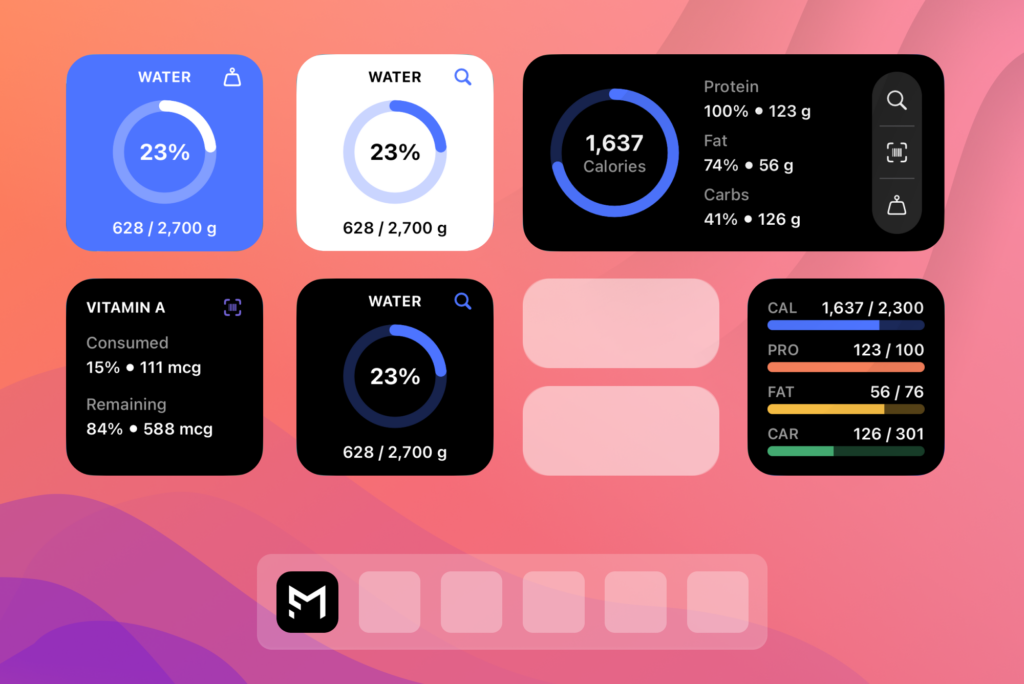Dynamic energy expenditure calculator
MacroFactor's best-in-class energy expenditure calculator continually adapts to changes in your metabolism
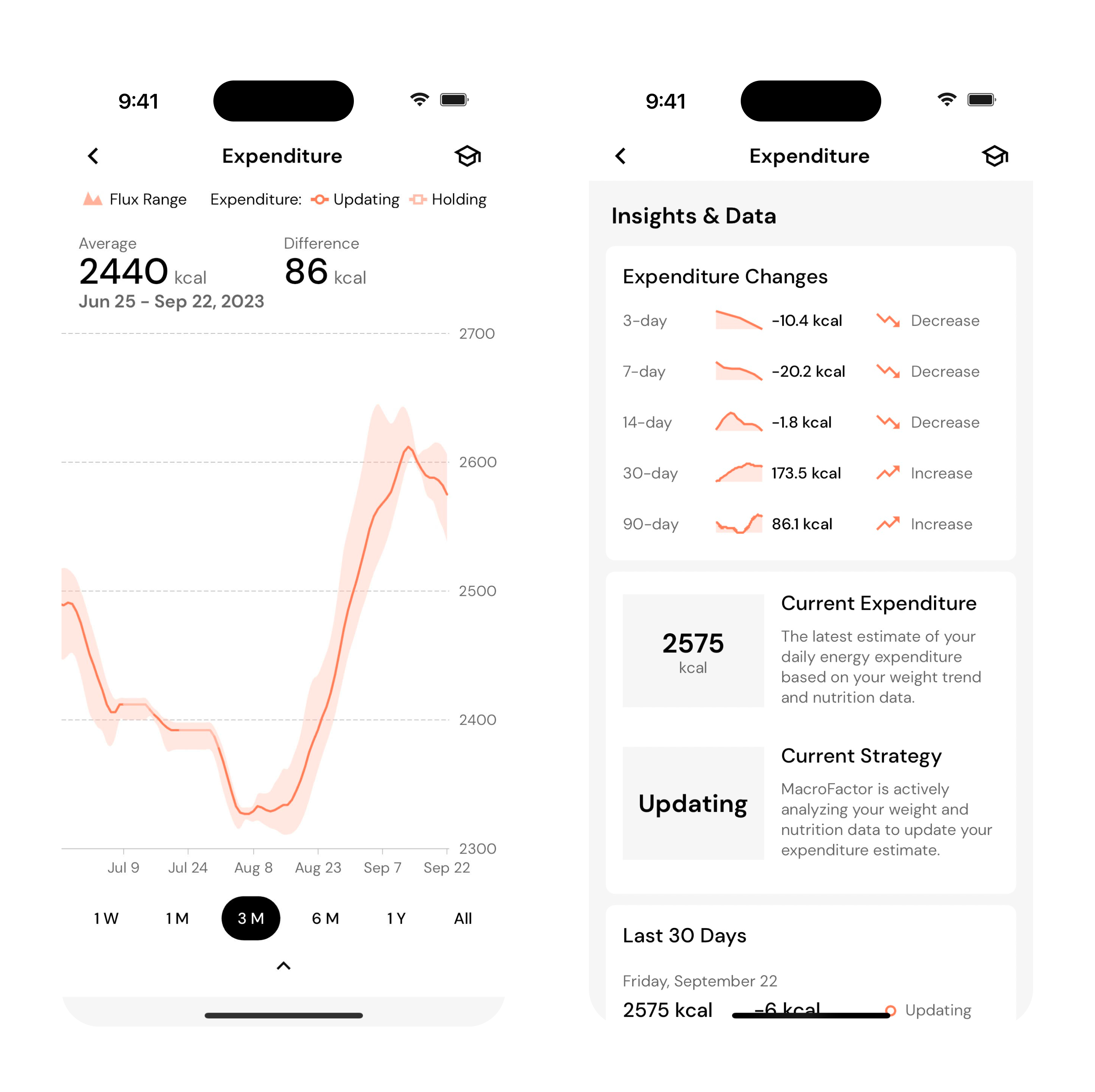
Get a personalized energy expenditure calculation based on your daily nutrition and weight data
MacroFactor uses a unique energy expenditure calculation and all of the weight and nutrition information you log to personalize your calorie intake targets, much like a nutrition coach would.
How it works
You probably are familiar with CICO: Calories in – Calories out = Change in stored energy.
If you eat fewer calories than you expend, you will lose weight. If you eat more calories than you expend, you will gain weight.
To estimate your energy expenditure, MacroFactor simply rearranges the equation to solve for “Calories out” Calories in – Change in stored energy = Calories out.
What makes MacroFactor different?
Other food loggers help you quantify “calories in” by tracking your caloric intake, but they use rough, static formulas or unreliable expenditure estimates from wearables to estimate “calories out.”
- What that means for you: Using an outdated or unreliable expenditure estimate means you can’t solve the CICO equation. The estimate doesn’t accurately account for changes in your energy needs from lifestyle, activity, and weight or nutrition shifts. You don’t know how much to eat to reach your goals, the scale stops moving, and you hit frustrating plateaus.
MacroFactor is the only food logger on the market to use a dynamic algorithm that dials in your “calories out” much more accurately.
- How? The app continually updates and refines your personalized expenditure estimate based on your nutrition data and your rate of weight gain or loss.
What that means for you: MacroFactor’s energy expenditure calculator can continually update your expenditure estimate, adapt to changes in your metabolism, and provide high-quality data to the app’s coaching algorithms.
The problem with other expenditure calculation methods
Calculators: The energy expenditure calculators you’ll find online and in almost all other apps use static equations that provide a rough estimate of your total daily energy expenditure.
But the estimates they generate are routinely off by several hundred calories. The typical error is approximately 300-350 calories per day. (If you’d like to learn more, check out our article The Problems with Calorie Counting.)
Wearables: These devices are also known to regularly misestimate energy expenditure. In fact, they under- or overestimate energy expenditure by at least 10% more than 80% of the time.
Furthermore, their reliability (i.e. their ability to produce consistent estimates, even if those estimates are inaccurate) is unknown. (If you’d like to learn more, check out our article The Drawbacks of Using Wearable Devices to Inform Nutrition Targets.)
The bottom line
MacroFactor keeps pace with your ever-changing energy needs and updates your expenditure estimate as needed to ensure that your calorie targets are appropriate for your goals.
Gain a better understanding of your body's energy needs
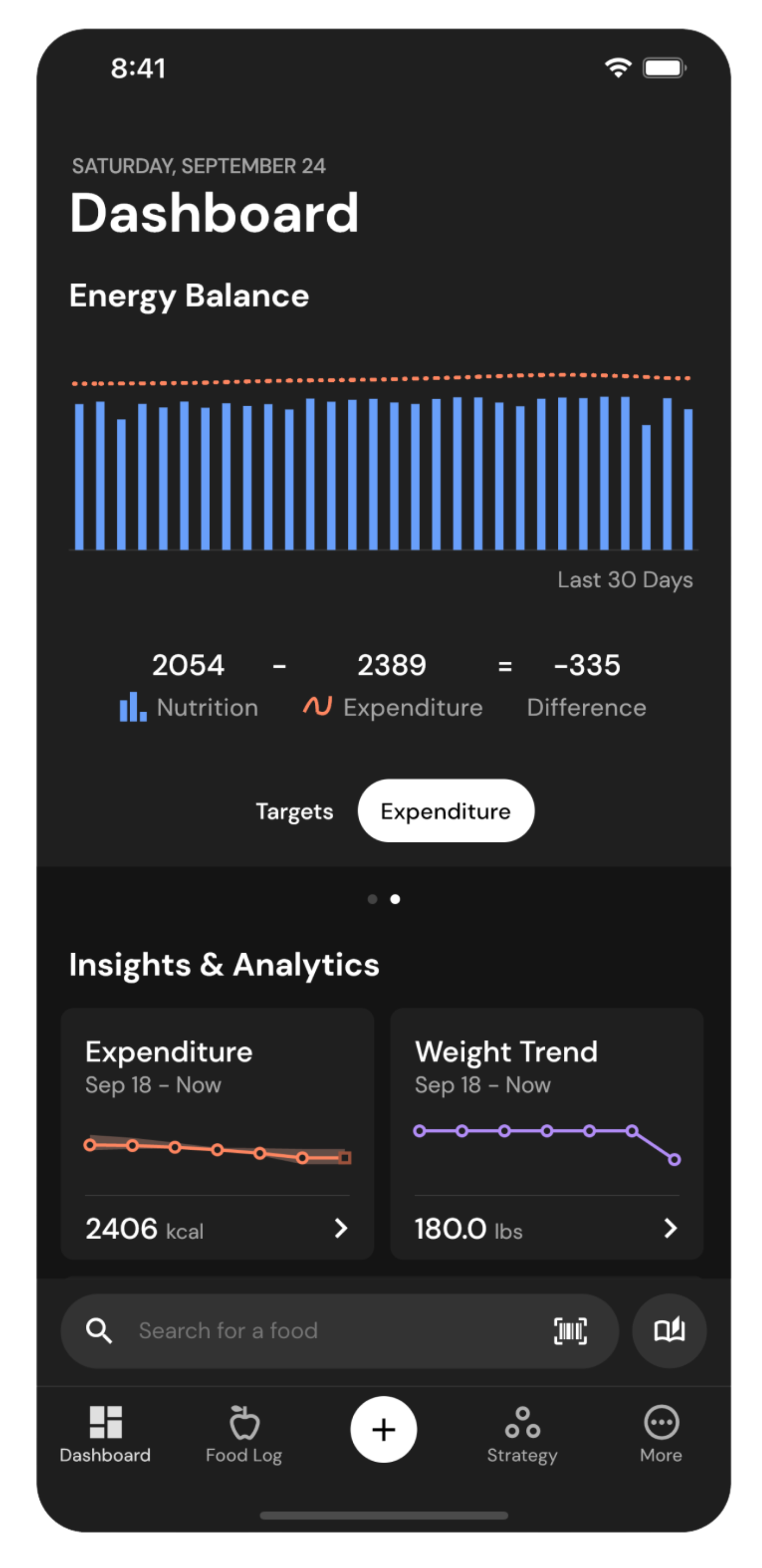
Gain a better understanding of your body's energy needs
As you use MacroFactor, the app will continue monitoring your energy intake and changes in weight to update your calculated energy expenditure.
If you gain or lose a substantial amount of weight, or if your activity levels change, you won’t have to guess how those changes will impact your daily energy expenditure. MacroFactor will be able to measure and visualize the impact for you (and then adjust your calorie and macro recommendations accordingly).
By observing changes in your calculated energy expenditure over the course of an attempt to gain or lose weight, you can better understand the extent of the metabolic adaptation you personally experience.
Stay on track toward your goals with smart, weekly calorie adjustments
MacroFactor’s energy expenditure calculation ensures that your calorie recommendations are appropriate for your goals.
Instead of merely hoping that a static equation will generate appropriate energy intake targets, MacroFactor uses all of the weight and nutrition information you log to personalize your calorie intake targets, much like a nutrition coach would.
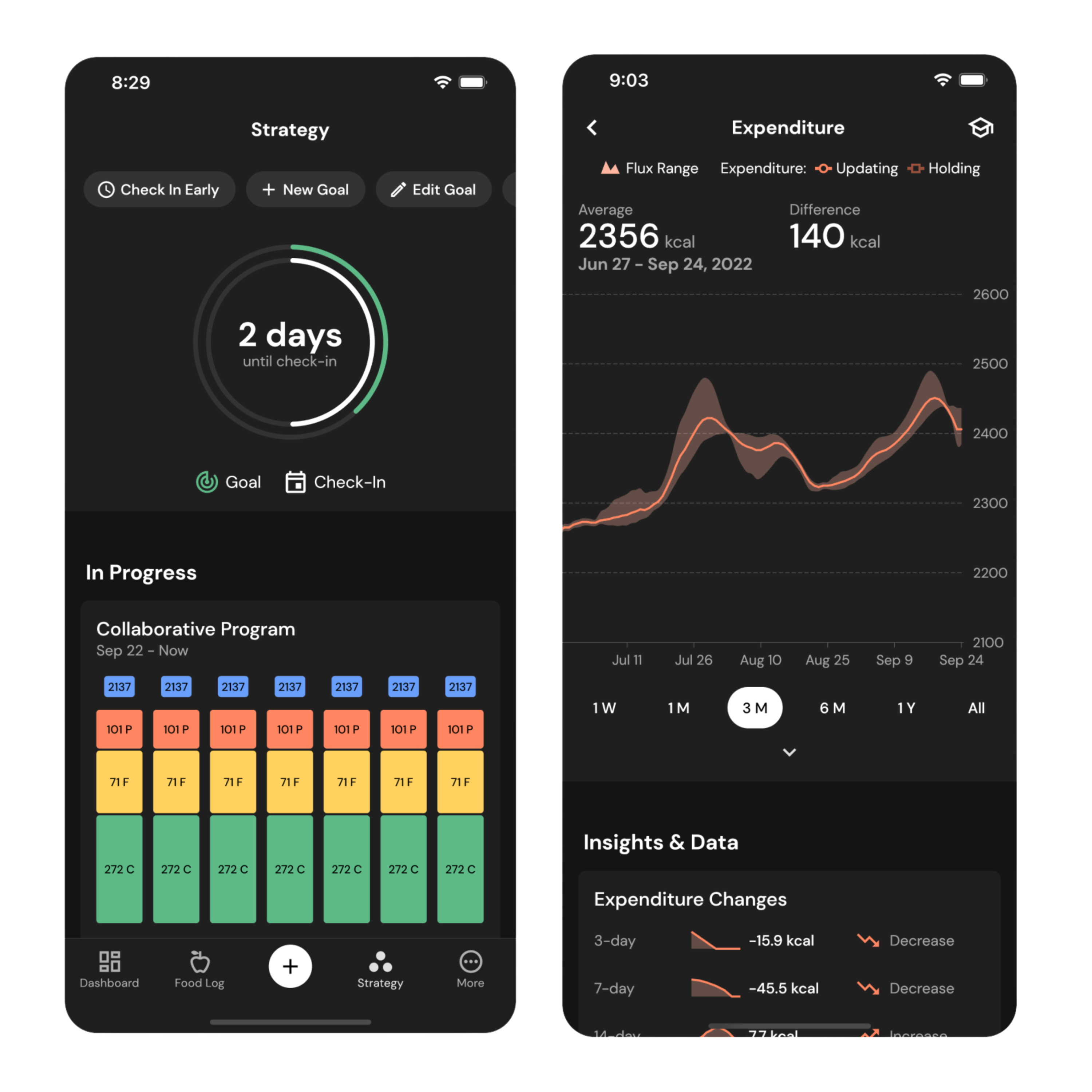
When you set up a new goal, MacroFactor looks at the rate at which you’d like to gain or lose weight, converts that rate of weight gain or loss to the size of the calorie surplus or deficit it represents, and adds or subtracts that figure from your daily energy expenditure.
Once a goal is locked in, week-to-week adjustments move in concert with changes in your energy expenditure.
Example of MacroFactor's dynamic adjustments based on smart energy expenditure calculations
Let’s say that you burn 2500 calories per day, and you’re aiming to lose 1lb per week.
At first, MacroFactor might estimate that you’ll burn 2750 calories per day, and thus recommend that you consume 2250 calories per day to achieve your target rate of weight loss.
You initially lose about 0.5lb per week, but your weight loss plateaus as metabolic adaptation sets in, and your daily energy expenditure decreases.
Our algorithms will see that when you consume 2250 calories per day, you’re losing weight slower than you’d like to.
As a result, your estimated energy expenditure will decrease, and your calorie target will decrease at your next weekly check-in to ensure that your calorie targets are actually appropriate for your goals.
If your activity levels increase, that increase will be reflected by the combination of your nutrition and weight trend data: either your weight will keep changing (or not changing) at the rate it was previously while your calorie intake increases, or your weight trend will bend downward while your calorie intake remains constant. When this happens, your calculated energy expenditure will increase, and your calorie recommendations will increase.
If metabolic adaptation occurs while you’re trying to lose weight, that will also be reflected by the combination of your nutrition and weight data, which will decrease your calculated energy expenditure, in turn decreasing your calorie targets.

